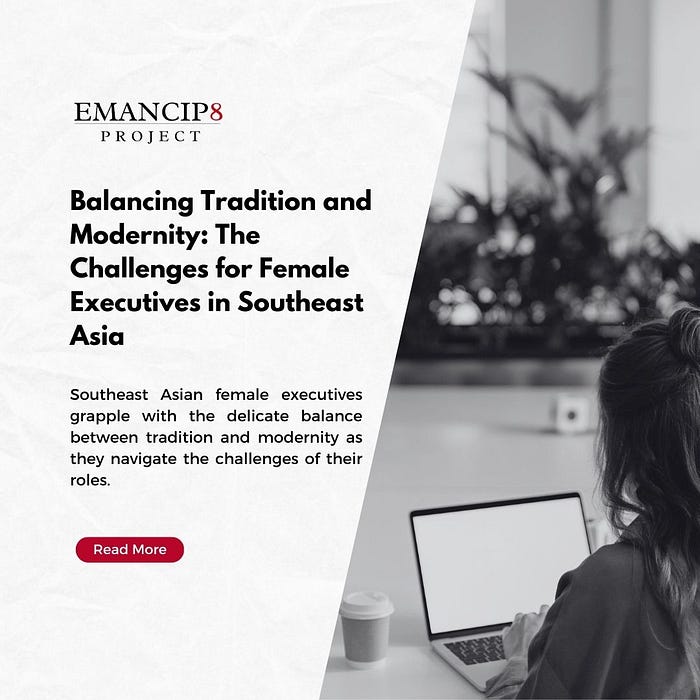Balancing Tradition and Modernity: The Challenges for Female Executives in Southeast Asia by Emancip8 Project

Southeast Asian female executives grapple with the delicate balance between tradition and modernity as they navigate the challenges of their roles. This article delves into the complexities these women face, including cultural expectations, gender bias, work-life balance, and the lack of representation in senior leadership positions.
Cultural expectations play a significant role in shaping the experiences of female executives in Southeast Asia (Eagly & Carli, 2007). Traditional gender roles often dictate that women prioritize their familial responsibilities over career aspirations. Consequently, female executives face unique challenges in reconciling their professional ambitions with the expectations of their communities. Organizations can support these women by fostering a culture of inclusivity and encouraging work-life balance initiatives.
Gender bias remains a persistent issue within the corporate world of Southeast Asia, affecting the opportunities available to female executives (Khattak et al., 2019). Unconscious biases can limit women’s access to promotions, leadership development programs, and networking opportunities. Companies must actively work to combat these biases through training, mentorship programs, and diversity initiatives.
Achieving work-life balance is a critical challenge for female executives in Southeast Asia, as they often face increased pressure to juggle their professional responsibilities with caregiving roles (Greenhaus & Allen, 2011). By offering flexible work arrangements, childcare support, and family-friendly policies, organizations can help women strike a balance between their personal and professional lives.
Representation in senior leadership is crucial for fostering gender equality in the workplace (Carter & Silva, 2010). However, women continue to be underrepresented in executive positions in Southeast Asia. Companies must commit to increasing diversity in their leadership ranks by setting targets, implementing affirmative action policies, and promoting qualified women to leadership positions.
In conclusion, female executives in Southeast Asia face a myriad of challenges as they strive to balance tradition and modernity in their professional lives. Addressing these challenges requires concerted efforts from organizations, policymakers, and society as a whole to foster a more inclusive and equitable corporate landscape in the region.
References:
- Eagly, A. H., & Carli, L. L. (2007). Through the labyrinth: The truth about how women become leaders. Harvard Business School Press.
2. Greenhaus, J. H., & Allen, T. D. (2011). Work-family balance: A review and extension of the literature. In Handbook of occupational health psychology (pp. 165–183). American Psychological Association.
3. Carter, N. M., & Silva, C. (2010). Pipeline’s broken promise. Catalyst.
4. Khattak, S., Rehman, A. U., & Rehman, I. U. (2019). Female leadership and gender bias: Evidence from a South Asian perspective. Journal of Gender Studies, 28(1), 21–36.
5. World Economic Forum. (2020). Global Gender Gap Report 2020. World Economic Forum.
Read more at Emancip8 Project.
Comments
Post a Comment